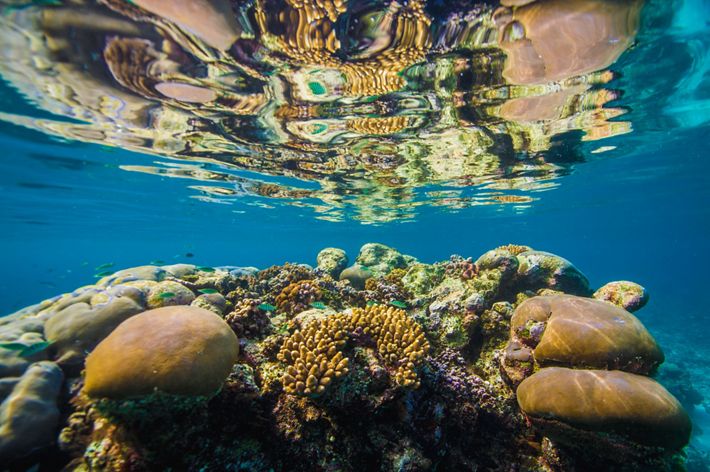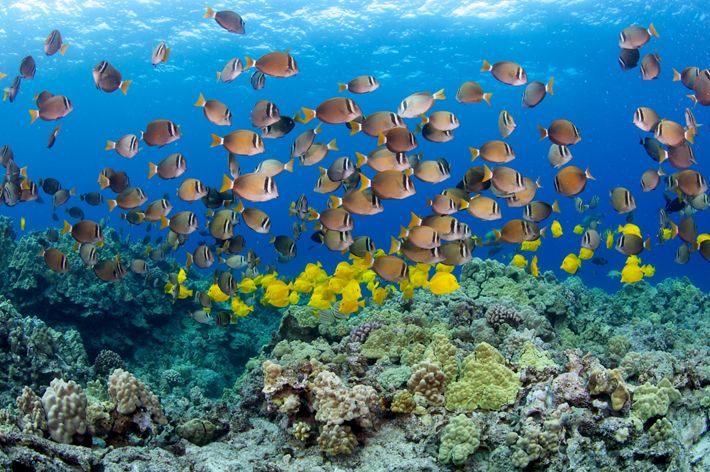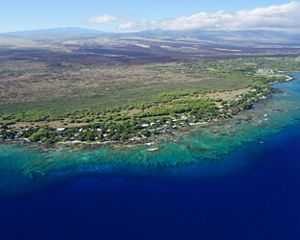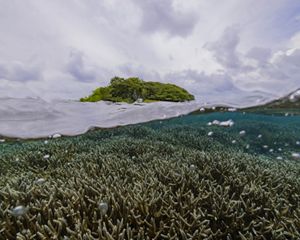Insuring Nature to Ensure a Resilient Future
Integrated solutions linking nature and insurance can help to reduce risk and build resilience to the impacts of climate change.

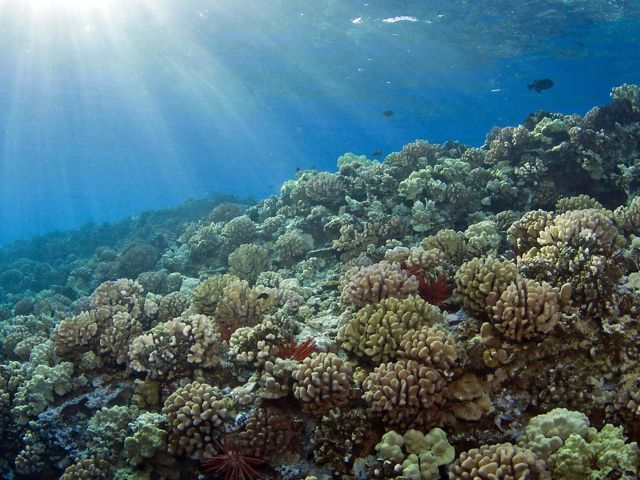
Why Buy Insurance?
Repairing reefs is costly and reef insurance can provide vital funding when it is urgently needed. Parametric insurance is uniquely suited to address the increasing frequency and severity of weather-related events driven by climate change. Download the upgraded policy factsheet.
Using Insurance to Safeguard Coral Reefs
In a first in the U.S., The Nature Conservancy insured Hawai‘i's coral reefs in 2022. If hurricanes or tropical storms damage the reefs, the payout would provide funds to restore the reefs. Read The New York Times story.
The Nature Conservancy (TNC) expanded and upgraded Hawai‘i’s parametric coral reef insurance policy for 2024, purchased as a key component of an innovative post-storm response and risk financing program. The policy, designed in collaboration with insurance advisor WTW, more than doubled the coverage area to capture more storms, increased the minimum payout to $200,000 and provided equal coverage across the reefs surrounding the eight Main Hawaiian Islands. The policy was renewed in 2025. Learn more about the upgraded policy.
Addressing the Risk of Climate Impacts
Hawai‘i’s coral reef insurance policy is one of a growing number of insurance products designed to address the risk of climate impacts—in this case, damage to corals caused by high tropical storms and hurricanes of increasing intensity—and to build the resilience of the reefs and the communities that rely on them for flood risk reduction, livelihoods from tourism, recreation and fisheries, as well as sustenance and other community benefits.
Parametric policies designed for natural assets or natural infrastructure (sometimes referred to as a nature-based solutions) such as coral reefs provide pre-agreed payouts for ecosystem repair and restoration based on the occurrence of pre-established parameters, rather than indemnifying against actual loss as is typical of property insurance.
The Hawai‘i policy follows a successful proof of concept project in Quintana Roo, Mexico, where TNC and partners launched the world’s first post-storm response and risk financing program for coral reefs and beaches in 2019. In 2020, Hurricane Delta triggered a payout from the Quintana Roo insurance policy, which was purchased for the State of Quintana Roo by the Coastal Zone Management Trust, a public-private partnership established by the State of Quintana Roo government, hotel and tourism representatives, TNC and others. The nearly $850,000 payout was the first time ever that funding from an insurance policy was available to help a natural asset recover.
After the waters settled and conditions became safe, Reef Brigades—the local name of groups of specially trained reef first responders—launched post-storm response activities to assess the damage and make repair plans. They then deployed to stabilize large and medium size coral colonies. In the first 11 days, the brigades collected more than 8,000 coral fragments broken by the hurricane and planted them in the reef. These actions enhance the reef’s recovery process, thus helping to maintain the valuable benefits the reefs provide to coastal communities and the creatures that depend on the reefs for food and shelter.
“The 2020 payout was a very significant milestone in our climate risk reduction and management work, where we use nature’s inherent capacity to protect coastal communities from the impacts of climate change and utilize innovative finance mechanisms, such as insurance, to fund ecosystem repair and restoration efforts in order to maintain the flood risk reduction, livelihoods and sustenance benefits provided by the ecosystems,” said Eric Roberts, TNC’s senior manager of climate risk and resilience.
“The fact that the insurance policy paid out, and funded vital reef repair activities, is a win for nature and a win for the coastal communities. It is also a win for insurance companies whose potential payouts for damage to coastal properties could be significantly higher without this protective natural infrastructure reducing storm surge.”
Quote: Eric Roberts
The 2020 payout was a very significant milestone in our climate risk reduction and management work.
The Role of Nature and Insurance to Address Increasing Climate Risk
Climate change and habitat loss are driving increased risk from natural hazards such as riverine and coastal flooding, heat, drought and wildfires. Coastal areas worldwide are increasingly at risk from intense storms, sea level rise, erosion and other impacts of climate change. Nearly 840 million people around the world live with the risk of coastal flooding. Many of the most climate-vulnerable communities—those that historically have been excluded or marginalized—live and work in areas that are increasingly vulnerable to the impacts of climate change.
Nature-based solutions can help to reduce the risks and mitigate climate change while supporting biodiversity, if given the chance. For example, a healthy coral reef can reduce up to 97% of a wave’s energy before it hits the shore, reducing both the effects of storm surge and daily erosion. Approximately 25% of all marine fish and creatures rely on reefs for food and shelter at some point in their lifecycle. Other ecosystems such as salt marshes and mangroves provide similar flood risk reduction benefits to people while also providing habitat and storing carbon to mitigate the impacts of climate change. However, development pressure, pollution and overuse of natural resources also must be addressed, as they continue to weaken ecosystems and diminish the myriad of benefits they provide.
Partnership and Opportunity
Many opportunities exist to merge ecosystem science and insurance to produce positive outcomes for both people and nature, though additional research and novel partnerships are needed to fully realize the potential. In addition to restoring nature after it is damaged using payouts from ecosystem specific insurance (such as coral reef or mangrove insurance), a risk financing mechanism called resilience insurance could incentivize upfront restoration of ecosystems for risk reduction.
TNC explored the application of this concept with Munich Re to address riverine flooding and with WTW to address wildfire risk. Nature-positive insurance products, similar to the catastrophe wrapper used on the Belize Blue Bond could de-risk investments and unlock funding for nature-based solutions and/or carbon credits. Opportunities to incentivize the use of NBS for risk reduction may also be possible by working with the investment arms of insurance and reinsurance companies. Partnerships across conservation and climate adaptation, the risk management industry, private business, academia, humanitarian relief and government agencies will be paramount to advance scientific research, implement policies and regulations and build the local governance and technical capacity necessary to fully develop and implement these innovative approaches to manage climate risk for the benefit of people and biodiversity.
Given the urgency to protect and maintain natural infrastructure and the potential of insurance, we are currently working to adapt the post storm response and risk financing model to protect reefs in new geographies and exploring whether other risks such as coral bleaching and sedimentation could be covered. At the same time, we are working with partners to apply the model to new ecosystems such as mangroves and salt marsh. Projects are currently underway or being explored in Asia Pacific, the Bahamas and the broader Caribbean, the United States and Australia.
Contact
For more information, questions or feedback, contact:
Eric Roberts
Senior Manager, Climate Risk and Resilience
Global Climate Adaptation Team
eric.roberts@tnc.org
TNC received generous support from the Rockefeller Foundation, Bank of America Charitable Foundation, Swiss Re Foundation, Howden Foundation and anonymous donors to make this work possible.
Resources
-
Primer: Insurance for Coral Reefs
PDF
The Nature Conservancy and local experts are piloting a new financial solution to restore reefs and beaches—and their protective services—after extreme storms hit.
Download -
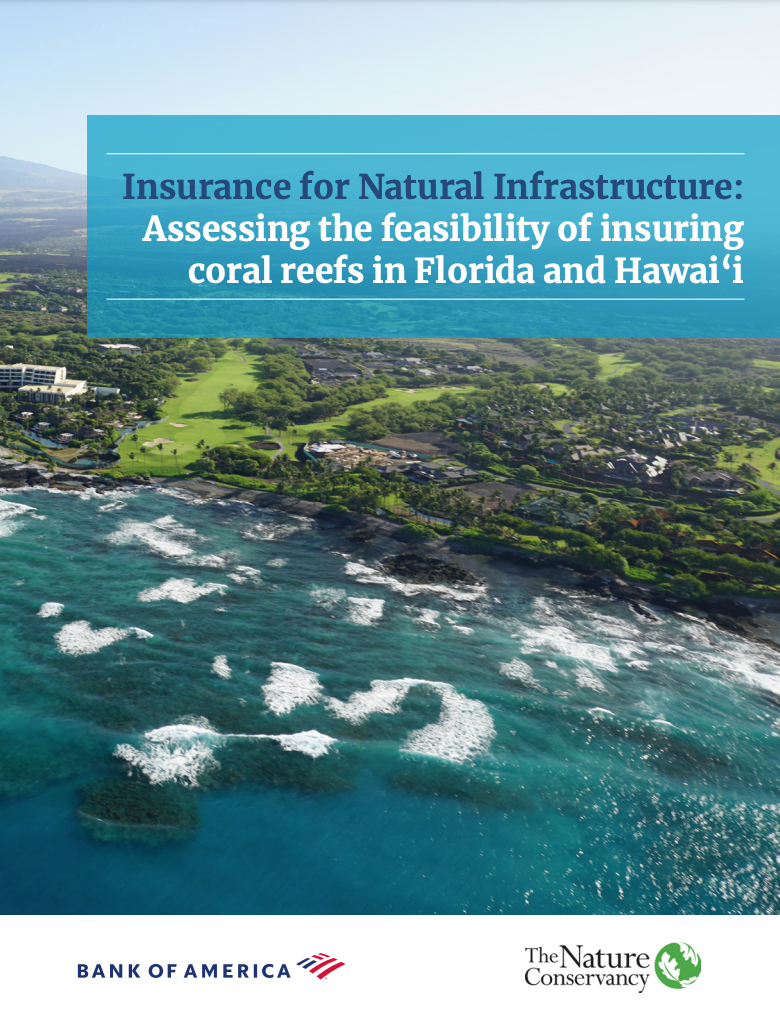
Insurance for Natural Infrastructure
PDF
Assessing the feasibility of insuring coral reefs in Florida and Hawai‘i.
Download -

Cost-Effective Mangrove Restoration & Insurance
PDF
How a market-based mechanism could help protect key coastal habitat, featuring a case study of the Caribbean region More information
Download -
Coastal Wetlands and Flood Damage Reduction
Using flood models advanced by the insurance industry, the study shows that wetlands likely saved more than $625 million in flood damages across 12 US states during Hurricane Sandy in 2012.
Download -
Managing Coasts with Natural Solutions
These "Guidelines for Measuring and Valuing the Coastal Protection Services of Mangroves and Coral Reefs" seek to reorient the cost-benefit analysis between built, or “gray infrastructure”, and “green infrastructure”—based on environmental processes.
Download -
Mapping the Global Value and Distribution of Coral
Researchers used an innovative combination of data-driven academic research and crowd-sourced and social media-related data to reveal that 70 million trips are supported by the world’s coral reefs each year, making these reefs a powerful engine for tourism.
Download -
Cost-Effectiveness of Nature-Based Adaptation
Coastal risks are increasing from both development and climate change, prompting interest in the protective role that coastal nature-based measures, such as reefs and wetlands, can play in adapting to these risks. But until now we've lacked quantitative information on relative costs and benefits.
Download
Global Insights
Check out our latest thinking and real-world solutions to some of the most complex challenges facing people and the planet today.
